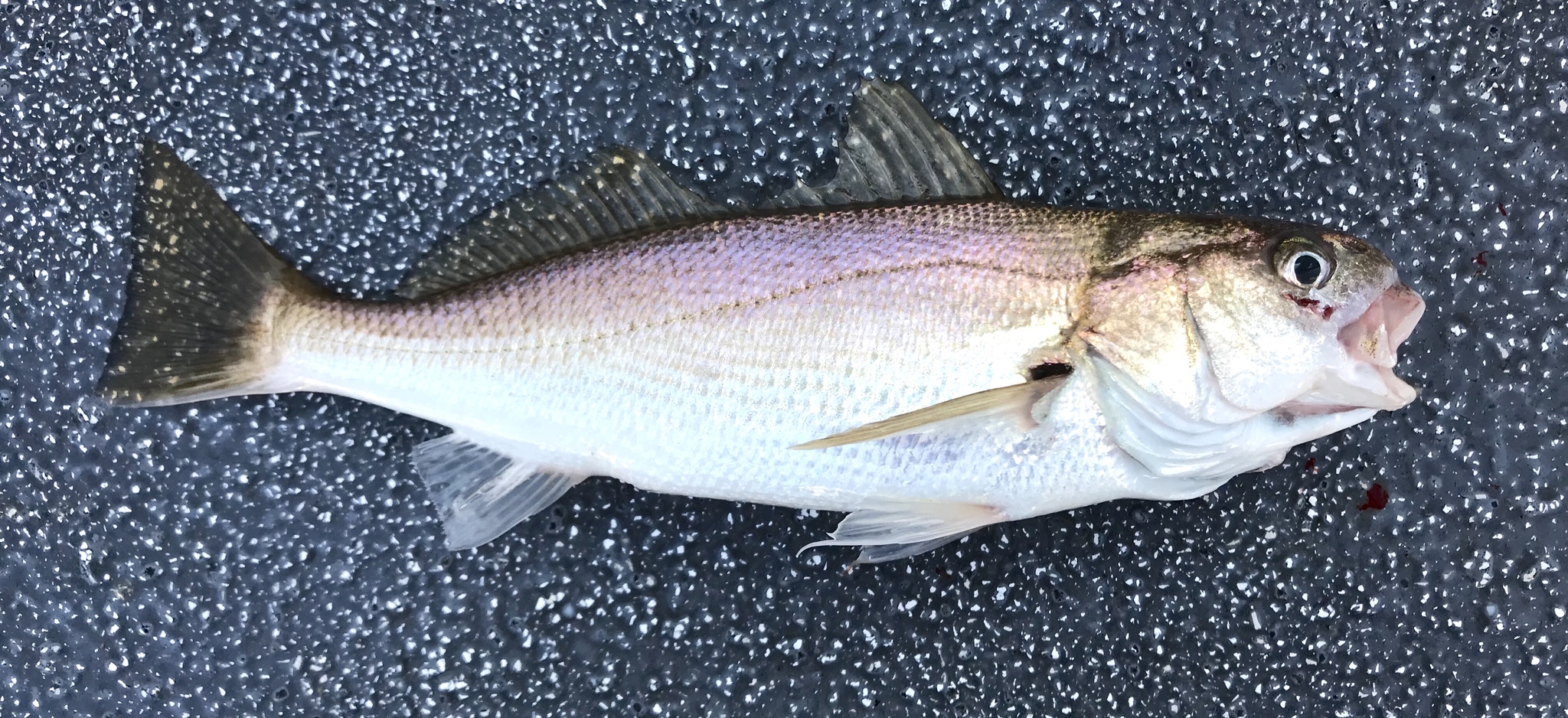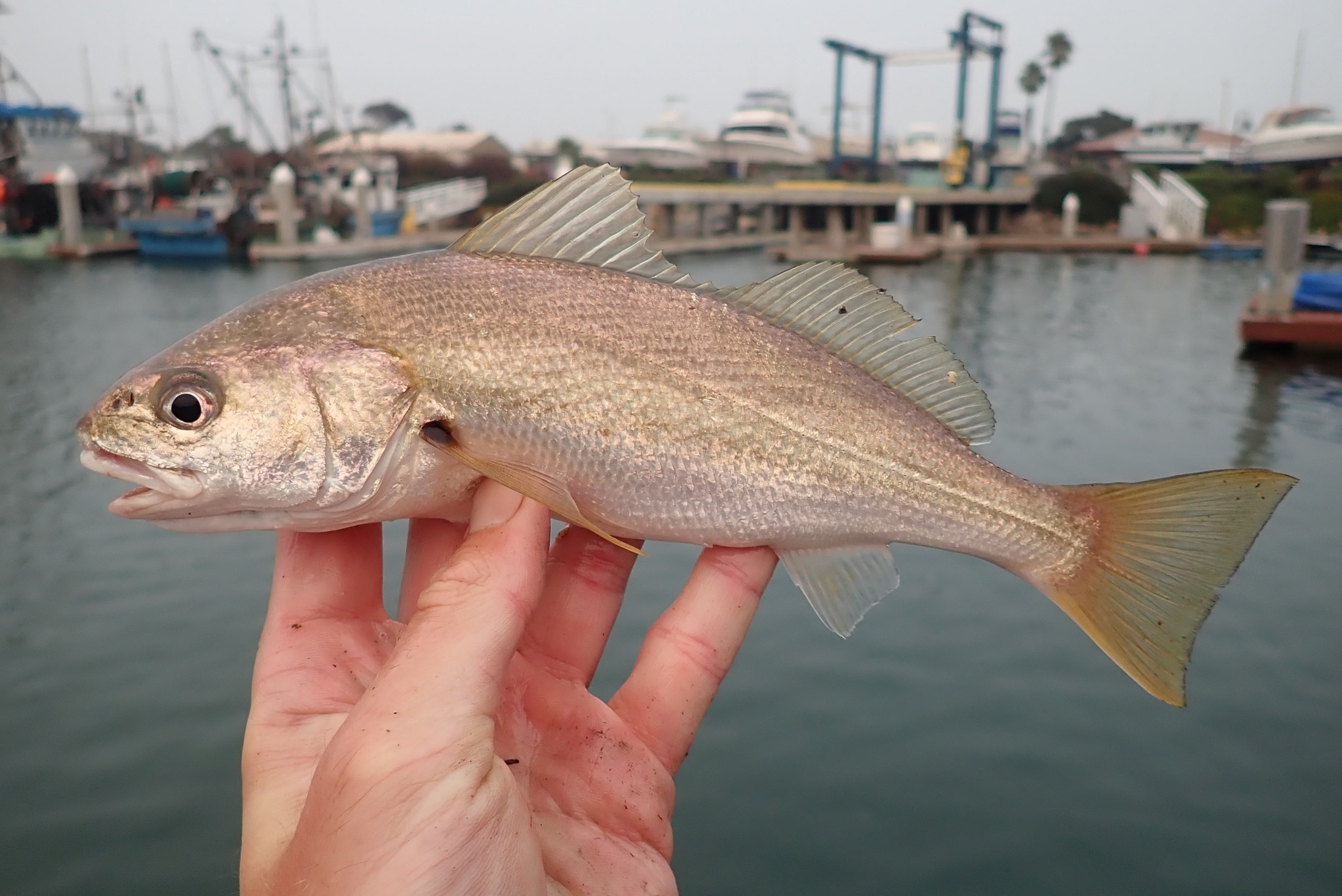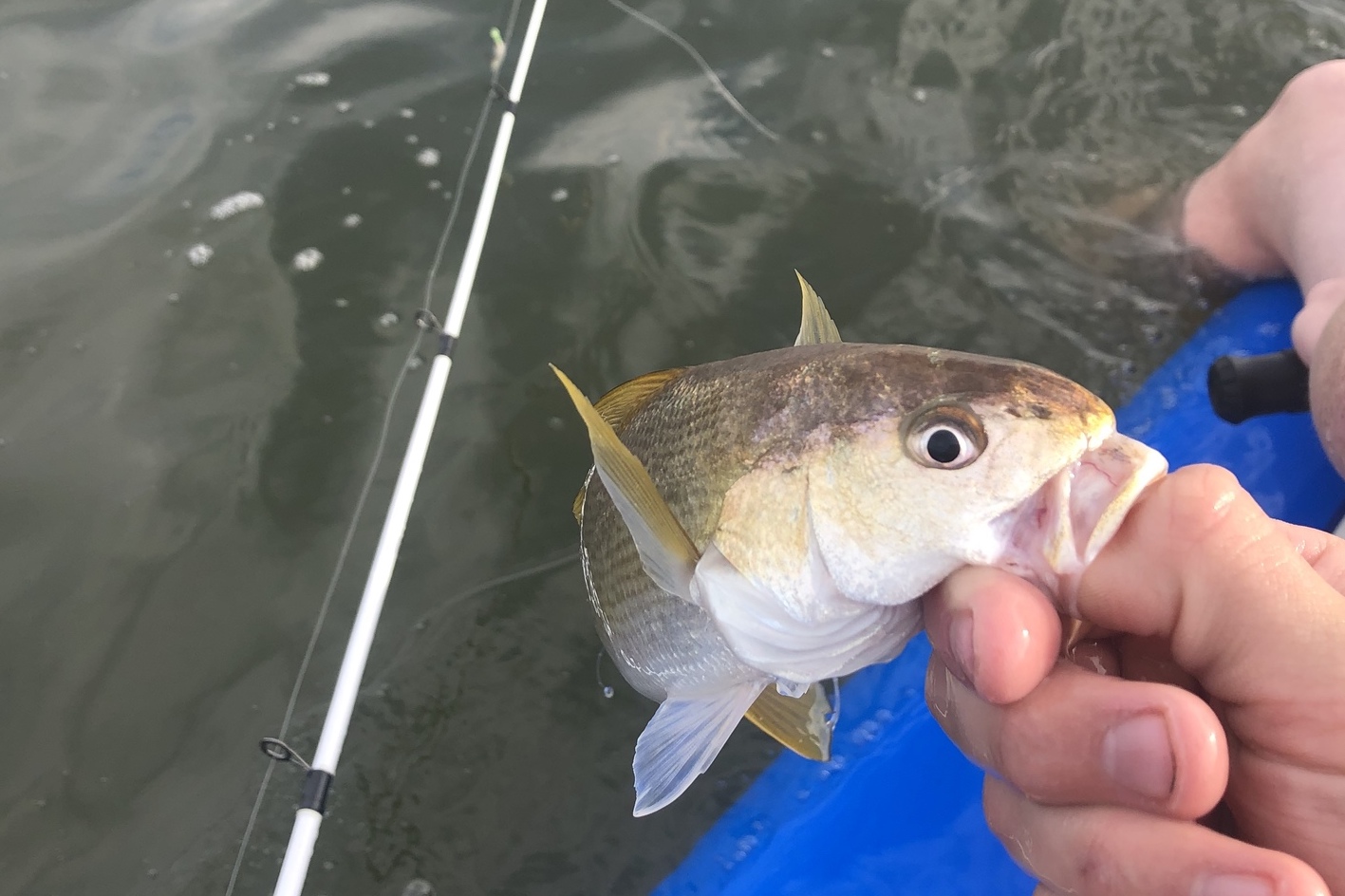Genyonemus lineatus
North Coast (Oregon Border to Point Arena)
North Central Coast (South of Point Arena to Half Moon Bay)
Central Coast (South of Half Moon Bay to Point Conception)
Santa Barbara (Point Conception to Point Dume)
South Coast (Point Dume to Mexico border)
Firm fish
Wild caught

The Science

Taxonomic description
- Has a moderately elongated, compressed body ranging from 25.4-41.9 cm (10-16.5 inches) long; slightly rounded snout projects beyond the lower jaw. [1,2]
- Has a brassy or metallic gray back that gradually fades to a silver or white belly; brassy yellow fins with a black spot at the base of the pectoral fin. [1,2]
- Easily distinguished from other croakers (California Corbina and Yellowfin Croaker) by the absence of a single barbel at the tip of the lower jaw. [1]
Distribution
- Found from the Magdelena Bay in Baja California, Mexico to the Barkley Sound in British Columbia, however, it is most abundant south of San Francisco. [1,2]
Life history
- Can live up to about 15 years, some spawn for the first time between 2 and 3 years old. [2]
- Spawning occurs from November to April, with peak spawning in February and March. It is a batch spawner, and batches can have 800 to 37,200 eggs each! [3]
- Begins life on coastal waters, then moves to the bottom and eventually migrates to deeper waters. [4]
Habitat
- Usually swims in loose schools over sandy bottoms at depths up to 30 m (100 ft) but can be found as deep as 201 m (660 ft). [5]
- Found near most oceanfront piers in California. [1]
- Eats smaller fish and invertebrates like clams, shrimp, crabs, and polychaete worms. [5]
- Predators include fish, birds, and mammals. [3]
- Can accumulate toxins in its flesh as it congregates around sewer outfalls. [1]
The Fishery

Seasonal availability
- Available year-round. [1]
Regulatory and managing authority
- As established by the Marine Life Management Act, the California Fish and Game Commission regulates the fishery, and the California Department of Fish and Wildlife manages this fishery. [13]
- The white croaker population is monitored by the Office of Environmental Health Hazard Assessment due to concerns over pollution accumulation in this fish. [3]
Gear type
- Typically caught using hook and line, but is also caught as bycatch by fisheries using entagling nets, surrounding nets, trawl nets, set longline, and hook and line. [3]
Status of the fishery
- Little information is known about the white croaker population, but a decrease in landings have led to some concern that this species is decreasing in population. [3]
- The white croaker fishery is primarily recreational. [14]
Potential ecosystem impacts
- Lost gear from hook and line fishing creates marine debris when fishing line is lost, and can entangle other wildlife. [3]
The Seafood

Edible protions 
- The whole fish is edible. [8]
Description of meat
- The meat is mild-flavored and is safe to consume depending on where it is caught. [1,9]
Culinary uses
-
For a recipe for pan-fried croaker, visit The Spruce Eats. [8]
-
For a barbequed croaker recipe, visit Dobby's Signature. [15]
Nutritional information
- Nutritional information on 100g of raw Atlantic croaker (Micropogonias undulatus) can be found on the table to the right. [7]
Toxicity report
- Because this fish sometimes congregates around sewer outfalls, it can accumulate toxins that make it unsafe for human consumption. Refer to local guidelines to see if it is safe to eat this fish. [1,9]
Seasonal availability
- This fish is available year-round. [1]
References
[1] Jones, K. 2018. Pier Fishing in California. Web. https://www.pierfishing.com/white-croaker/. Accessed 10 July 2020.
[2] California Department of Fish and Wildlife. 2013. California Marine Sportfish Identification: Croakers. Web. https://wildlife.ca.gov/Fishing/Ocean/Fish-ID/Sportfish/Croakers. Accessed 10 July 2020.
[3] Ocean Protection Council. n.d. Fishery-at-a-Glance: White Croaker. Web. http://www.opc.ca.gov/webmaster/_media_library/2019/08/Draft_Marine-Spec.... Accessed 10 July 2020.
[4] Love, M.S., et al. 1984. Fishery Bulletin 82(1). Web. https://www.st.nmfs.noaa.gov/spo/FishBull/82-1/love.pdf. Accessed 10 July 2020.
[5] Snow, J. Mexico-Fish, Birds, Crabs, Marine Life, Shells and Terrestrial Life. n.d. White Croaker. Web. http://mexican-fish.com/white-croaker/. Accessed 10 July 2020.
[6] Fishbase. n.d. Family Sciaenidae-Drums or croakers. Web. https://www.fishbase.se/Summary/FamilySummary.php?Family=Sciaenidae. Accessed 10 July 2020.
[7] Self. n.d. Fish, croaker, Atlantic, raw. NutritionData. Web. https://nutritiondata.self.com/facts/finfish-and-shellfish-products/4046/2. Accessed 20 July 2020.
[8] Imatome-Yun, N. 2019. Korean Fried Whole Fish. The Spruce Eats. Web. https://www.thespruceeats.com/korean-yellow-croaker-2118566. Accessed 22 July 2020.
[9] California Office of Environmental Health Hazard Assessment. 2018. A Guide to Eating Fish from the California Coast Advisory for Areas Without Site-Specific Advice. Web. https://oehha.ca.gov/media/downloads/advisories/coastalposter092718.pdf. Accessed 22 July 2020.
[10] Cantrell, B. iNaturalist. 2020. Digital image. Web. https://www.inaturalist.org/photos/95574730. Accessed 26 February 2021.
[11] lizardman69. iNaturalist. 2020. Digital image. Web. https://www.inaturalist.org/photos/104431165. Accessed 26 February 2021.
[12] Verch, M. flickr. 2020. Wild croaker fillet (white fish) on the grill served with flaked salt at restaurant Q11 in Pollença, Majorca. Digital image. Web. https://flickr.com/photos/160866001@N07/50165895562. Accessed 26 February 2021.
[13] Marine Life Management Act. n.d. California Department of Fish and Wildlife. Web. https://wildlife.ca.gov/Conservation/Marine/MLMA. Accessed 24 August 2020.
[14] California Department of Fish and Wildlife. 2019. White Croaker, Genyonemus lineatus, Enhanced Status Report. Web. https://marinespecies.wildlife.ca.gov/white-croaker/. Accessed 14 December 2020.
[15] Dobby's Signature. 2013. Barbecued Marinated Croaker Fish Recipe on Street Foodie Waka. Web. https://dobbyssignature.com/barbecued-marinated-croaker-fish-recipe-on-s.... Accessed 4 February 2021.
[16] Schwarz, C. iNaturalist. 2018. Digital image. Web. https://www.inaturalist.org/photos/23247287. Accessed 26 February 2021.
